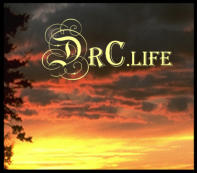
Monday 10 | 17| 2016
The Mutuality of the Compassion Space
When someone has openly come for help with their suffering and someone has willingly offered assistance, this is the basis of compassion. A sacred process has now started, a journey from suffering into well being. It all starts with the agreement between the two, and then there can be movement in this sacred process toward a mutuality. This movement towards a shared mutuality in experiencing the moment can happen in a flash, or over minutes, or longer. This sense (or experience) of mutuality is an important part of understanding the compassion space and its connection to helping others. Mutuality is the door to the path of guided well being and is seldom experienced the same way twice. The descriptors that people use for this mutuality; he was right there with me, I felt safe, I was not doing this alone, etc. (see chapter 2 of the Healing Relationship). The practitioners speak of this mutuality as empathy, or being very connected, walking in their shoes (see chapter 3 of the Healing Relationship). For me the experience is one of personally shifting so I can “sense” the person deeply. The shift for me is a purposeful one. I empty myself of the daily baggage I always seem to have stuffed into my pockets. With letting go of ego (see the Mystic Relationship for more on this) there is an open still place, one of peace and trust and the participant can join the practitioner there. It is quite similar to the space obtained from deep meditation on compassion. The stillness lets us sense the flow within the compassion space, much like standing in a still pool with the person and carefully paying attention to the flow of the water – recognizing even the slightest move made. Shifting out of ego and then into the stillness before the compassion space to experience another person has always felt like I was looking upon a new scenic vista, a brand new state park, or museum. Everything is new; feelings, sensations never before experienced and with more behind every word spoken. Then the task is to verbalize these mutuality experiences in a way that expresses clearly the emotive layering in the suffering, any barriers to its relief, and to present the information in a way that matches the participant’s needs on multiple fronts. As this mutuality path is walked by both please note that this is not a trance like experience. There is no hypnotism happening. Both are fully aware that they are taking a journey to look for well being and both are also fully aware of their surroundings. And, in that alert compassion space flow moment, they both feel that they are on the same journey, able to describe aspects of the same things along the path. This sense of mutuality is a one of the five characteristics of empathy and the healing relationship. It is the door to the healing experience, and not every helping relationship leads through this door to a shift-to-well-being moment. Mutuality is directly tied to the search for well-being within the compassion space. The practitioner is not drumming up old memories to compare to the story being told or the story teller (although at beginning levels of empathy students will use this role taking strategy – see empathy description in chapter one of the Healing Relationship). The focus with mutuality is on immersion into the moment. This doesn’t mean that the practitioner may engage in reflection later – just not during the mutuality experience. This quiet/still compassion space is experienced as a part of mutuality. This is important because after the mystic/healer goes through (with the proper intent) the door of mutuality s/he will likely share the suffering (the empathic walk in their shoes type of sharing) of the other – and possibly even deeply share this suffering. Mutuality: it is the door to experiencing the compassion space shift-in-well being moment and whatever is in the way of that happening within the here-and-now moment.










Seeking the Soul of Life
























